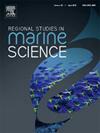Impact of subsidy strategies on the optimization of container intermodal transport route selection
IF 2.1
4区 环境科学与生态学
Q3 ECOLOGY
引用次数: 0
Abstract
To achieve carbon neutrality goal, addressing environmental impact of the transportation sector is crucial, and intermodal transport may be a good option. Therefore, government is trying to promote the development of intermodal transport by providing subsidies to lower the costs of clean transport modes. This paper primarily discusses how to establish uniform interprovincial subsidy standards for effective emission reduction policies following the government’s proposal of various subsidy policies, and explores how carriers can select the optimal routes under these policies. A bi-level model is established, with the upper-level model being the decision-making of subsidy policies to achieve the highest emission reduction benefits, while the lower-level one being the optimization of intermodal transport routes. Transportation demand in the Yangtze River Delta region, covering short and medium to long distances to Yangshan Port, is used as case studies to investigate the issue of intermodal transport route selection under four subsidy schemes. In both cases, subsidies for railway transport are used, which increases the proportion of railway in the optimal transport route and reduced carbon emissions. However, the two cases employ different types of subsidies, and the choice of subsidy type might be influenced by the varying distances of transport. It also discusses the impact of changes in waterway freight rates and carbon taxes on the scheme and route selection under these four subsidy schemes, aiding the government and carriers in better understanding the influence of subsidy policies on route selection and providing support for carbon emission reduction decisions.
补贴策略对集装箱多式联运路线选择优化的影响
为了实现碳中和的目标,解决交通运输部门对环境的影响是至关重要的,而多式联运可能是一个很好的选择。因此,政府正试图通过提供补贴来促进多式联运的发展,以降低清洁运输方式的成本。本文主要探讨在政府提出各种补贴政策后,如何建立统一的省际有效减排政策补贴标准,并探讨在这些政策下承运人如何选择最优路线。建立双层模型,上层模型为实现最大减排效益的补贴政策决策,下层模型为多式联运路线优化。本文以长江三角洲地区到洋山港的短途和中长途运输需求为例,探讨了四种补贴方案下的多式联运路线选择问题。在这两种情况下,都使用了铁路运输补贴,这增加了铁路在最优运输路线中的比例,减少了碳排放。然而,这两种情况采用的补贴类型不同,补贴类型的选择可能会受到运输距离不同的影响。并讨论了四种补贴方案下水路运价和碳税的变化对方案和航线选择的影响,帮助政府和承运人更好地了解补贴政策对航线选择的影响,为碳减排决策提供支持。
本文章由计算机程序翻译,如有差异,请以英文原文为准。
求助全文
约1分钟内获得全文
求助全文
来源期刊

Regional Studies in Marine Science
Agricultural and Biological Sciences-Ecology, Evolution, Behavior and Systematics
CiteScore
3.90
自引率
4.80%
发文量
336
审稿时长
69 days
期刊介绍:
REGIONAL STUDIES IN MARINE SCIENCE will publish scientifically sound papers on regional aspects of maritime and marine resources in estuaries, coastal zones, continental shelf, the seas and oceans.
 求助内容:
求助内容: 应助结果提醒方式:
应助结果提醒方式:


